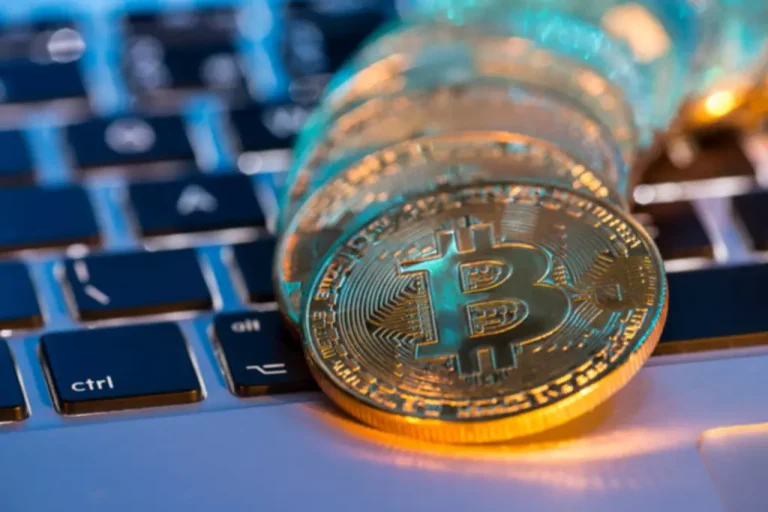Contributing liquidity to a liquidity pool on a DEX that employs an AMM mannequin makes it attainable to profit from AMMs (Automated Market Makers). This in fact can range tremendously depending on the digital property you’re concerned with. AMMs have a number of what are amms benefits over typical centralized exchanges, including more liquidity, ease of use, and accessibility. They may, however, have downsides like transient loss, slippage, and platform concerns.

As AMMs evolve, DeFi turns into a greater and more reliable space for merchants and institutions alike to participate. Synthetic property are a way for AMMs to use smart contracts to virtualize the AMM itself, making it extra composable. Impermanent loss occurs when the worth ratio of pooled assets deviates from the tokens’ preliminary values.
Benefits Of Amms
The balance of the liquidity pool is maintained by arbitrage merchants capitalizing on price differentials of belongings on a number of exchanges to make profits. Consequently, the worth of ETH will continuously modify till it reaches the market rate. Traditional markets often depend on intermediaries or market makers to ensure liquidity, who may demand a premium for his or her providers. AMMs, however, make the most of mathematical formulation to find out the worth of assets and execute trades, which might scale back trading prices and the spread between buy and promote costs. A typical decentralized trade will have many liquidity swimming pools, and each pool will comprise two completely different property tied together as a buying and selling pair. The trading pairs can symbolize any two tokens as long as they adjust to Ethereum’s native ERC20 token standard.
They could broaden to assist more property, offer new options, and integrate with other DeFi protocols, contributing to the ongoing decentralization and innovation throughout the cryptocurrency ecosystem. Liquidity swimming pools are pools of tokens locked in a wise contract used for market making. When a user desires to buy a monetary asset, say a cryptocurrency like Bitcoin, they have to first entry a cryptocurrency exchange — the place consumers and sellers meet. Simply put, market making is the activity of providing liquidity to a market by simultaneously quoting costs to each buy and promote an asset. AMMs do not come without hazards, so when exchanging on these platforms, traders should use prudence, diversify their holdings, and employ risk management strategies. Despite the hazards, AMMs give investors distinctive options to interact within the cryptocurrency market.
Automated market makers (AMMs) are a part of the decentralized finance (DeFi) ecosystem. They permit digital belongings to be traded in a permissionless and automated method by utilizing liquidity swimming pools rather than a conventional market of buyers and sellers. AMM customers supply liquidity pools with crypto tokens, whose costs are determined by a constant mathematical formulation. Liquidity swimming pools can be optimized for various purposes, and are proving to be an important instrument within the DeFi ecosystem. Traditional exchanges depend upon liquidity both from their reserves or provided by individual market makers to facilitate trades.
Balancer
The order e-book is a dynamic, real-time electronic report that maintains and shows all orders to purchase or promote a cryptocurrency at different prices at any given point in time. The order matching system is a specialized software protocol that matches and settles the orders recorded on the order book. Greater transparency with on-chain order books and the shortage of a centralized entity makes DEXs safer than their centralized counterparts.
This strategy supplies elevated liquidity, accessibility, and ease compared to conventional order book-based exchanges. While AMMs have their very own unique dangers, they provide traders an revolutionary method to decentralized trading in the cryptocurrency market. Impermanent loss is the primary and the most typical risk skilled by liquidity suppliers in automated market makers. Impermanent loss is the decrease in token worth that users expertise by depositing tokens in an AMM versus merely holding them in a pockets over the same time. In DeFi protocols like an automated market maker, any individual can create liquidity swimming pools and add liquidity to a trading pair. Liquidity providers then receive LP tokens towards their deposits which symbolize their share in the liquidity pool.
Ultimately, the pool will keep in fixed balance by adjusting the worth of the property to maintain the total worth of ETH and BTC equal. Buyers and sellers problem orders to purchase or promote property at a sure value on a regular order book-based exchange, and the change matches those orders to complete trades. The proven reality that this system wants a intermediary to manage the order e-book and allow order matching, nevertheless, can result in problems together with order delays, value manipulation, and transaction charges. Curve Finance is an automatic market maker-based DEX with a novel positioning of being a dominating stablecoin trade. This enables Curve to be a dependable DEX with low slippage since costs of stablecoins are normally less risky than many different cryptocurrencies (usually inside a value band of $0.ninety five – $1.05). With centralized exchanges, a buyer can see all of the asks, corresponding to the prices at which sellers are willing to sell a given cryptocurrency.
First-generation AMMs typically wrestle with issues like impermanent loss and low capital efficiency, affecting both liquidity suppliers and merchants. An investor that makes a financial contribution to a liquidity pool is given tokens called https://www.xcritical.com/ liquidity supplier (LP) tokens in change, every representing a portion of the pool. Using LP tokens, investors might keep monitor of their contributions to the pool and calculate their portion of the buying and selling commissions the pool earns.
Liquidity suppliers earn extra in charges (albeit on a lower fee-per-trade basis) as a outcome of capital is used more efficiently, whereas arbitrageurs still revenue from rebalancing the pool. For AMMs, arbitrage merchants are financially incentivized to find assets which might be buying and selling at reductions in liquidity swimming pools and purchase them up till the asset’s worth returns consistent with its market price. Beyond offering steady liquidity and a permissionless environment, there are extra layers of advantages that AMMs present when in comparability with their traditional market counterparts. Once you stake your fund, you’ll obtain liquidity provider tokens that denote your share of the liquidity deposited in a pool. These tokens additionally make you eligible to obtain transaction fees as passive revenue. You may deposit these tokens on other protocols that accept them for more yield farming alternatives.
Despite this, CSMMs are hardly ever used as a standalone market maker, because of liquidity considerations about dealing with massive trades. Head of Strategy, Wee Kuo, a London School of Economics graduate, has excelled in roles at Genesis and at the Director and Head of Oil Trading in Asia. The DeFi space, and by extension AMMs, operate in a comparatively new and quickly evolving sector the place regulatory frameworks could be unclear or non-existent. This lack of clarity can pose risks associated to compliance with current financial legal guidelines and future regulatory actions, potentially affecting the operation and accessibility of AMM platforms. Cryptopedia does not assure the reliability of the Site content material and shall not be held answerable for any errors, omissions, or inaccuracies. The opinions and views expressed in any Cryptopedia article are solely those of the author(s) and do not replicate the opinions of Gemini or its management.
Users Must Be Informed Of Potential Dangers Associated With The Usage Of Amms, Such As:
By prioritizing pegged assets, Curve is a reliable market maker for giant trades, opening up specific use cases like crypto ETFs. Constant sum market makers (CSMMs) are an AMM variant that use the sum of two tokens as the basis, not like CPMM which uses the product. This is how an AMM transaction works and likewise the greatest way an AMM acts as both liquidity provider and pricing system. Due to the flexibility of AMMs, a number of the most popular DEXs like Curve, Uniswap, and Bancor use an identical mechanism to function.

A market maker facilitates the method required to offer liquidity for buying and selling pairs on centralized exchanges. A centralized change oversees the operations of traders and provides an automatic system that ensures trading orders are matched accordingly. In different words, when Trader A decides to purchase 1 BTC at $34,000, the change ensures that it finds a Trader B that is keen to sell 1 BTC at Trader A’s preferred change price. As such, the centralized trade is kind of the intermediary between Trader A and Trader B. Its job is to make the method as seamless as attainable and match users’ buy and promote orders in record time. This happens when the price of the assets in a liquidity pool diverges in any direction from the worth on the time they had been deposited.
Do Amms Support Fiat-to-crypto Trading?
At their essence, AMMs are decentralized protocols that allow digital assets to be traded mechanically and without the necessity for traditional market makers. By utilizing liquidity pools as an alternative of order books, AMMs facilitate buying and selling by making certain there’s always a counterparty ready to fill a commerce. This not solely streamlines the trading course of but also enhances liquidity, making markets more efficient and accessible.

With every commerce, the value of the pooled ETH will steadily recuperate till it matches the standard market price. Notably, only high-net-worth people or companies can assume the role of a liquidity supplier in traditional exchanges. As for AMMs, any entity can become liquidity suppliers as lengthy as it meets the necessities hardcoded into the smart contract. Moreover, AMMs aren’t simply isolated mechanisms; they are deeply integrated with different DeFi protocols.
Adjusting this formula permits for the optimization of liquidity swimming pools for varied functions. Additionally, Balancer provides liquidity suppliers the choice to receive fees for exchaning any two assets in the pool, quite than simply two particular property. Users who want to assemble more intricate liquidity pools or who want to present liquidity for uncommon property are increasingly utilizing balancer. By doing this, you will have managed to maximise your earnings by capitalizing on the composability, or interoperability, of decentralized finance (DeFi) protocols. Note, nevertheless, that you may want to redeem the liquidity supplier token to withdraw your funds from the preliminary liquidity pool.
Through this characteristic, Balancer has a aggressive advantage of upper gas efficiency and deeper liquidity in comparability with lots of its peers. However, the complexity of the platform may somewhat hinder its progress potential and ease-of-use for beginners. Curve Finance executed a $2.5 million sUSD-USDC trade that value lower than $2 in fuel charges.
